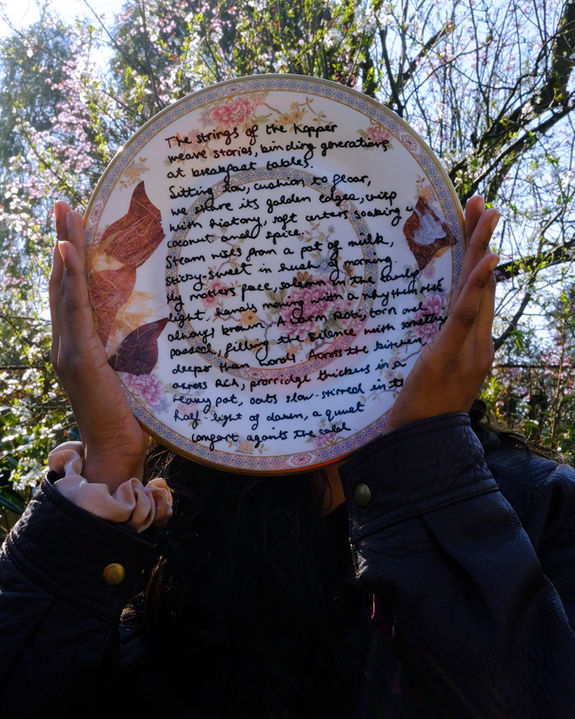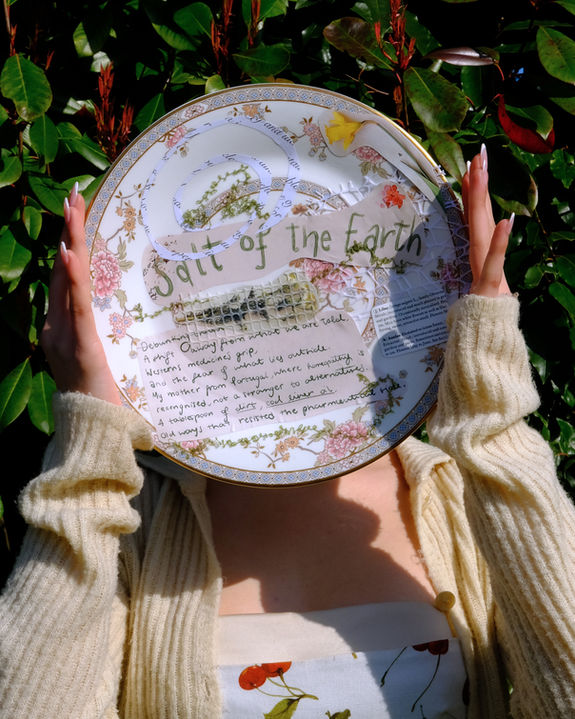
Behind The Seen is a collective formed around an ethos of gatherings rooted in nourishment, reciprocity, and care. Formed by Ananya Sebastian, Divya Balivada, Jess Hollis, Nasrah Omar, Shythira Rajkumar, and Zahra Mascolo, we extend an open invitation to all: come as you are, with your appetite, your stories, partake in the offerings.
We believe in the magic of collaboration, how reciprocal gestures can weave networks of healing. Our initiative, Recipes of Healing, is not just an art and cultural project—it is a table around which memory, ritual, and resistance are served. It intertwines food with personal and collective narratives, stirring together themes of belonging, ancestry, ecology, and identity.
At its heart lies an immersive installation: a dining circle shaped from materials that echo our plural roots. Around it, we gather to share recipes not merely for sustenance, but for healing. These become rituals, acts of remembrance, of transformation, of care.
The project resists permanence. Each iteration unfolds in spaces charged with personal, spiritual, or decolonial meaning. What is consumed and metabolized here is more than food, although it’s the critical element, the gatherings foreground food as a powerful medium for storytelling and reconnection to our roots.
Through shared meals and intimate dialogue, Recipes of Healing becomes a sanctuary; a space to reflect, to digest layered histories, and to reimagine futures where food is medicine, memory, and communion. Here, the act of eating becomes an act of becoming together.


Masala Chai ingredients
-
1 cup (250ml) water
-
1 cup (250ml) whole milk (or any preferred milk)
-
2 tsp loose black tea leaves (Assam or Darjeeling) or 2 tea bags
-
2 tbsp sugar (adjust to taste)
-
½ inch fresh ginger, crushed
-
2-3 green cardamom pods, crushed
-
1 small cinnamon stick (optional)
-
2-3 cloves (optional)
-
4-5 black peppercorns (optional)


An offering...
In our collective Behind The Seen’s ongoing project Recipes for Healing, the table runner transforms into an embodied fabric woven through memory, labor, and reciprocity.
Just as the nourishment of recipes carries ancestral knowledge and histories of migration, the layered and fragmented textiles in this project are a means of tactile and interactive storytelling, layered with stitched elements, words, and symbols recreated using reclaimed materials.
This fabric, created collectively, transforms into a living document of intersectional feminist practice, where the personal, communal and political are stitched together.


































